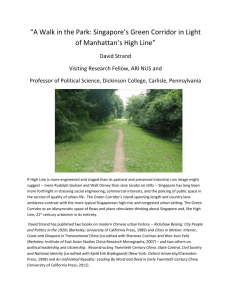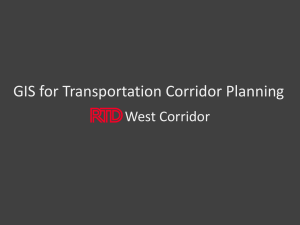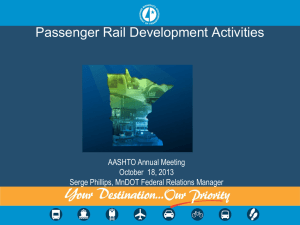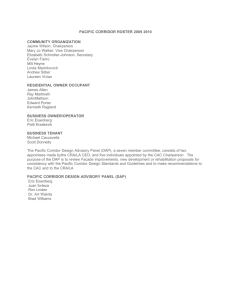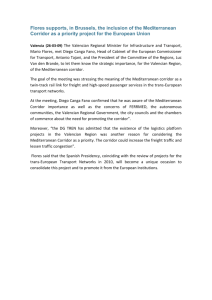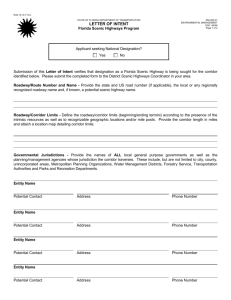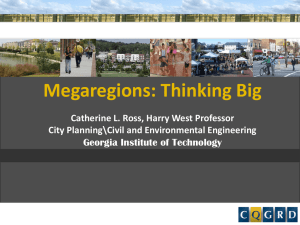Robert Lang, Ph.D., on The Arizona Sun Corridor
advertisement
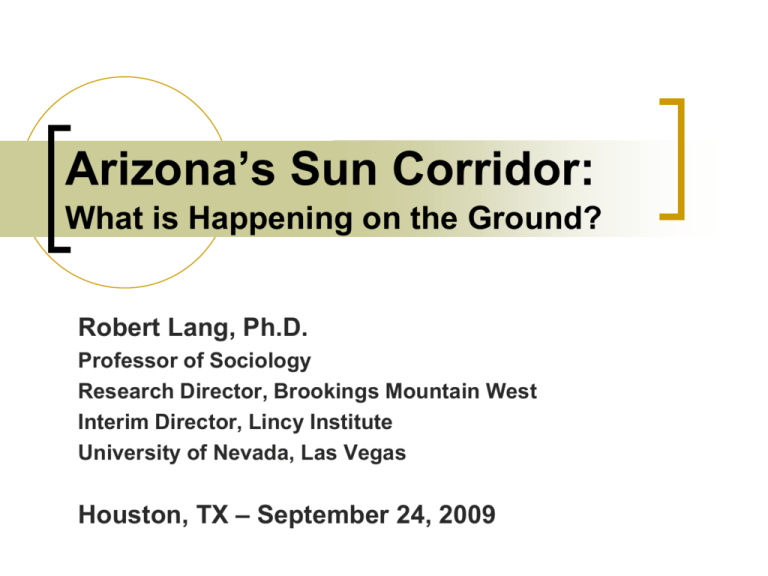
Arizona’s Sun Corridor: What is Happening on the Ground? Robert Lang, Ph.D. Professor of Sociology Research Director, Brookings Mountain West Interim Director, Lincy Institute University of Nevada, Las Vegas Houston, TX – September 24, 2009 Mountain Megas Report Some of the data in thisMega talk is Mountain from thethe 2008 report from Mountain Mega Brookings report from the Institution Brookings released in 2008 Institution The next round Theresearch next round of this of this research starts in Spring 2010starts summer 2009 Arizona Sun Corridor Report Report From the Morrison Institute at Arizona State University also released in 2008 WWW.ASU.EDU/ COPP/MORRISON Sun Corridor: Where is the Action? Economic Development Transportation Sun Corridor—Open for Business U of A/ASU Cooperation Federal Railroad Administration— Phoenix/Tucson Sun Corridor Rail Interstate 11 Connection with Las Vegas High-Speed Rail to Southern California Environment Water Management The 2008 Brookings Report Identified 5 Megapolitans in the Intermountain West Lang and Nelson, 2010 Book Texas and Southwest Megaregions Population Change, 1970-1940 Southwest Megaregion Population, 1970-2040 (Thousands) Megapolitan Area 1970 So Cal Las Vegas Sun Corridor 11,976 20,237 22,635 26,386 30,273 18,297 323 1,674 2,407 3,416 4,442 4,119 1,447 4,297 5,699 7,447 9,233 7,786 153% 1275% 538% Total 13,746 26,208 30,741 37,249 43,948 30,202 220% Source: Woods & Poole, 2009 2000 2010 2025 Growth Percent 2040 '70-'40 Change The New Urban Hierarchy Metros to Megas in Distance Orlando - Tampa (80m) Miami - West Palm Beach (65m) Florida Atlantic 65 Miles Florida Corridor 80 Miles Phoenix - Tucson (110m) Sun Corridor 110 Miles 20th Century Metropolitan Form 21st Century Megapolitan Form Sun Corridor Urban Realms S U N C O R R I D O R Urban Realms of the Sun Corridor Highlands West Valley Central Valley Upper East Valley East Valley Mid Corridor Foothills Rincon Gateway SouthCo Phoenix-Tucson Cooperation “Arizona Sun Corridor: Open for Business” is an unprecedented partnership between the Greater Phoenix Economic Council (GPEC) and Tucson Regional Economic Opportunities, Inc. (TREO) that is designed to bring high-wage jobs and investment to the Sun Corridor. UA/ASU Medical School Sun Corridor Solar Initiatives Linking the Southwest Megaregion Official 2009 HSR Map European High Speed Rail Megapolitan vs. Megaregion Rail Megapolitans are mostly continuous urban corridors and are best served by “Regional HighSpeed Rail” Megaregions are proximate but discrete urban complexes that need “Express High-Speed Rail” to bridge the gaps between multiple megapolitan areas Megapolitan vs. Megaregion Rail In Megapolitans—Trains mostly compete with autos and should make multiple stops at key centers along the route In Megaregions—Trains mostly compete with short-haul air service and should make very few stops in order to maintain maximum speed California/Mountain West HSR Megapolitans Front Range = Regional HSR Sun Corridor = Regional HSR Wasatch Front = Regional HSR Megaregions So Cal to Las Vegas = Express HSR So Cal to Nor Cal = Express HSR So Cal to Sun Corridor = Express HSR Look for… A New Book out Summer 2010 Megapolitans and Megaregions: The Emergence of Large-Scale American Urban Systems By Robert E. Lang, Arthur C. Nelson, and Casey Dawkins From American Planning Association Lincoln Institute of Land Policy


